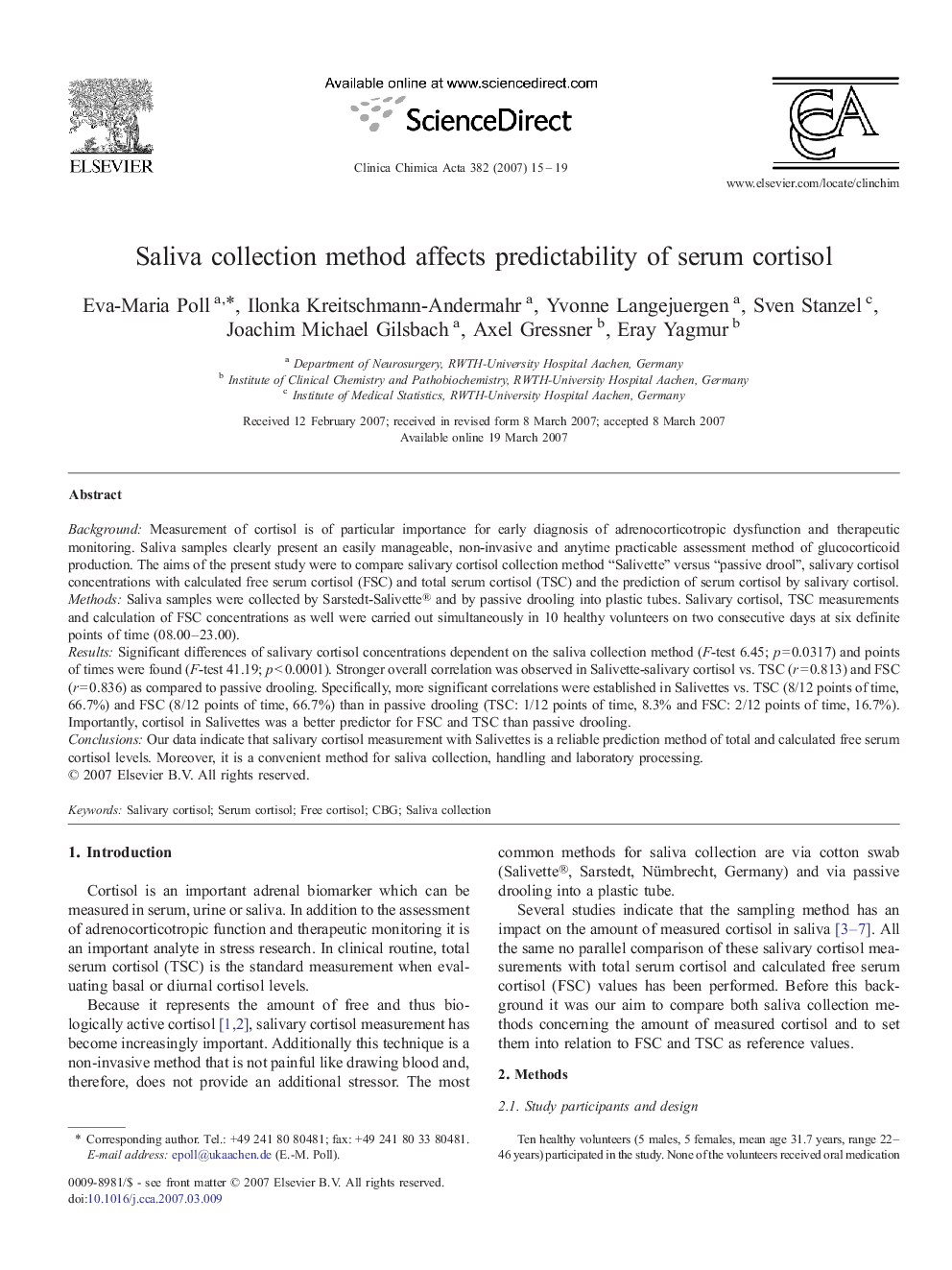| Article ID | Journal | Published Year | Pages | File Type |
|---|---|---|---|---|
| 1967577 | Clinica Chimica Acta | 2007 | 5 Pages |
BackgroundMeasurement of cortisol is of particular importance for early diagnosis of adrenocorticotropic dysfunction and therapeutic monitoring. Saliva samples clearly present an easily manageable, non-invasive and anytime practicable assessment method of glucocorticoid production. The aims of the present study were to compare salivary cortisol collection method “Salivette” versus “passive drool”, salivary cortisol concentrations with calculated free serum cortisol (FSC) and total serum cortisol (TSC) and the prediction of serum cortisol by salivary cortisol.MethodsSaliva samples were collected by Sarstedt-Salivette® and by passive drooling into plastic tubes. Salivary cortisol, TSC measurements and calculation of FSC concentrations as well were carried out simultaneously in 10 healthy volunteers on two consecutive days at six definite points of time (08.00–23.00).ResultsSignificant differences of salivary cortisol concentrations dependent on the saliva collection method (F-test 6.45; p = 0.0317) and points of times were found (F-test 41.19; p < 0.0001). Stronger overall correlation was observed in Salivette-salivary cortisol vs. TSC (r = 0.813) and FSC (r = 0.836) as compared to passive drooling. Specifically, more significant correlations were established in Salivettes vs. TSC (8/12 points of time, 66.7%) and FSC (8/12 points of time, 66.7%) than in passive drooling (TSC: 1/12 points of time, 8.3% and FSC: 2/12 points of time, 16.7%). Importantly, cortisol in Salivettes was a better predictor for FSC and TSC than passive drooling.ConclusionsOur data indicate that salivary cortisol measurement with Salivettes is a reliable prediction method of total and calculated free serum cortisol levels. Moreover, it is a convenient method for saliva collection, handling and laboratory processing.
